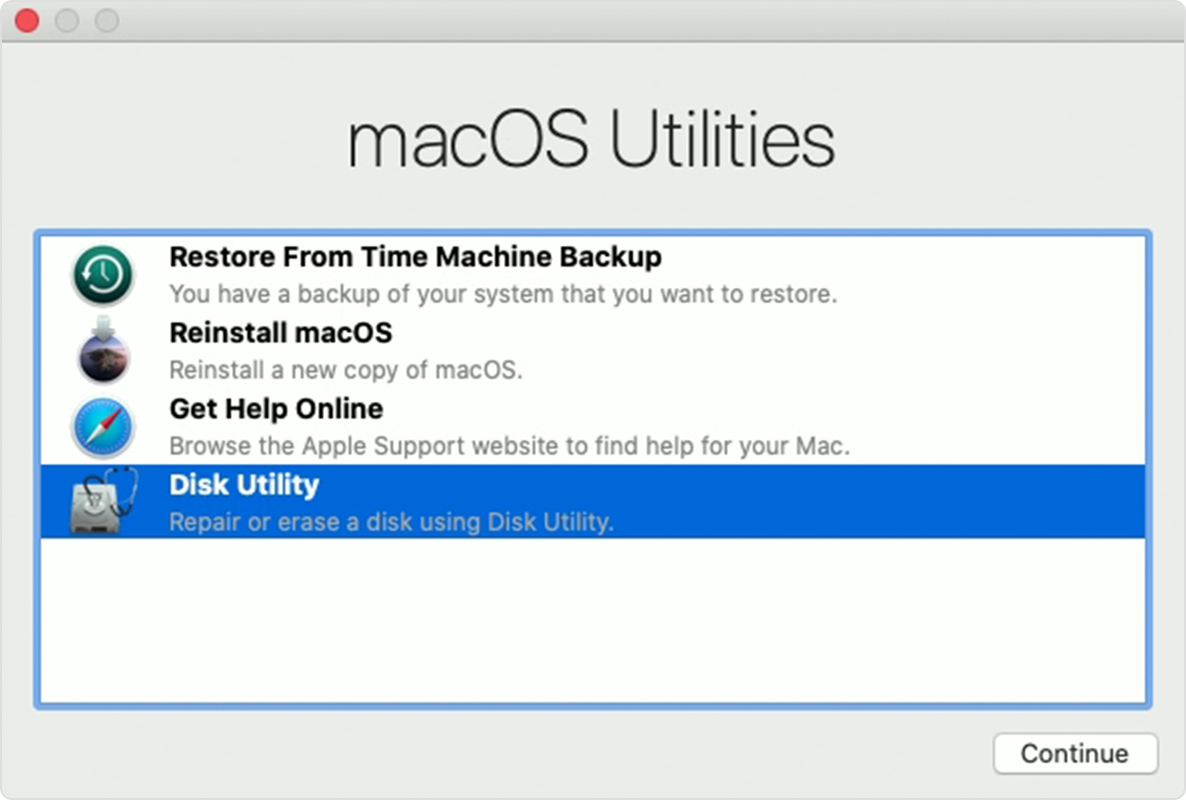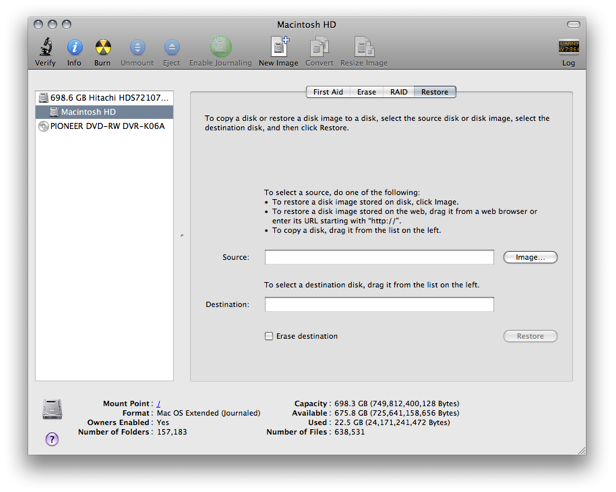Estimated reading time: 3 minutes
Disk utilization in Docker for Mac Estimated reading time: 3 minutes Docker Desktop stores Linux containers and images in a single, large “disk image” file in the Mac filesystem. This is different from Docker on Linux, which usually stores containers and images in the /var/lib/docker directory. Disk Drill is not only about Mac data recovery. It's also packed with useful disk tools for all data professionals and home users. The following extra tools are free and packed in Disk Drill right out-of-the-box. There’s no need to buy more apps to clean up your Macintosh, find duplicates on your hard drive, backup your data, or monitor your.

Docker Desktop stores Linux containers and images in a single, large “disk image” file in the Mac filesystem. This is different from Docker on Linux, which usually stores containers and images in the /var/lib/docker directory.
Where is the disk image file?
To locate the disk image file, select the Docker icon and thenPreferences > Resources > Advanced.
The Advanced tab displays the location of the disk image. It also displays the maximum size of the disk image and the actual space the disk image is consuming. Note that other tools might display space usage of the file in terms of the maximum file size, and not the actual file size.
If the file is too big
If the disk image file is too big, you can:
- move it to a bigger drive,
- delete unnecessary containers and images, or
- reduce the maximum allowable size of the file.
Move the file to a bigger drive
To move the disk image file to a different location:
Select Preferences > Resources > Advanced.
In the Disk image location section, click Browse and choose a new location for the disk image.
Click Apply & Restart for the changes to take effect.
Do not move the file directly in Finder as this can cause Docker Desktop to lose track of the file.

Delete unnecessary containers and images
Check whether you have any unnecessary containers and images. If your client and daemon API are running version 1.25 or later (use the docker version command on the client to check your client and daemon API versions), you can see the detailed space usage information by running:
Alternatively, to list images, run:
and then, to list containers, run:

Format Mac Disk For Pc
If there are lots of redundant objects, run the command:
This command removes all stopped containers, unused networks, dangling images, and build cache.
It might take a few minutes to reclaim space on the host depending on the format of the disk image file:
- If the file is named
Docker.raw: space on the host should be reclaimed within a few seconds. - If the file is named
Docker.qcow2: space will be freed by a background process after a few minutes.
Space is only freed when images are deleted. Space is not freed automatically when files are deleted inside running containers. To trigger a space reclamation at any point, run the command:
Note that many tools report the maximum file size, not the actual file size.To query the actual size of the file on the host from a terminal, run:
In this example, the actual size of the disk is 2333548 KB, whereas the maximum size of the disk is 64 GB.
Reduce the maximum size of the file
To reduce the maximum size of the disk image file:

Select the Docker icon and then select Preferences > Resources > Advanced.
The Disk image size section contains a slider that allows you to change the maximum size of the disk image. Adjust the slider to set a lower limit.
Click Apply & Restart.

When you reduce the maximum size, the current disk image file is deleted, and therefore, all containers and images will be lost.
mac, diskDon’t know how to check disk space on Mac? Read this guide about how to see disk space on Mac, and get a simple method to free up disk space on your Mac easily and quickly.
Mac Tips & Issue Fixes
Mac Related Tips
Mac Problems & Fixes
Mac Clean Tips
MacClean – Your Best Mac Cleaner Software
Mac Disk Drive
Download MacClean prior to save your time before reading this guide on how to check and free up disk space on Mac.
All of your apps and files on your Mac are stored on your hard drive. You can easily check the free space on your hard disk to make sure you have enough space on your computer’s hard disk. That’s because Mac OS X needs some free space to function effectively. Just follow the instructions below to determine how much space is available.
How to Check Disk Space on Mac
Can’t Miss: How to Clean Startup Disk on Mac >
Part 1. How to Check Disk Space on Your Mac
Step 1. On a desktop, click the Apple icon and select “About This Mac”.
Step 2. At the About This Mac window, click on the “More Info” button.
Step 3. Choose the “Storage” tab to check the disk storage overview and capacity.
Or you can
Step 1. On your Mac desktop, find your hard drive icon.
Step 2. Right click it and choose “Get Info” option.
Step 3. You will see “Capacity” of drive, “Available” and “Used” space.
If you find your disk space is running out of space, you might need to clean up your Mac in order to free up disk space on your Mac. Now follow the rest part to free up disk space on Mac with an effective Mac cleaning software MacClean.
You May Like: How to Speed Up Your Mac in 3 Ways >
MacClean is one powerful cleaning tool made to free up and speed up your Mac. It works well for all Mac computers, including MacBook Air, MacBook Pro, iMac, Mac mini, etc. This professional software can help you remove all kinds of junk files and cookies from your Mac to get more available disk space. It can also find out malicious cookies to eliminate hidden dangers.
Part 2. How to Free Up Disk Space on Mac with MacClean
Step 1. Free download and install MacClean on your Mac computer. Take a few seconds to finish the installation process.
Step 2. Clean junk files on your Mac. You can click any junk item on the left side of this software to clean them, such as System Junk (User Junk, OSX Junk, App Leftover) and Internet Junk (Browsing History, Caches, Download History and Cookies).
How to Free Up Disk Space on Mac with MacClean – Step 2
Step 3. Delete some useless old/large files or duplicate files on your Mac. By using Cleanup and Optimization Tools of MacClean, you can easily pick out duplicates and old/large files.
How to Free Up Disk Space on Mac with MacClean – Step 3
Mac Os Format Disk
Also Read: How to Clear All Cache on Mac >
The Bottom Line
If your Mac is running out of space after checking the disk space on your Mac, just try MacClean to free up more disk space on your Mac. If you have any questions, please let us know in the comment section. Meanwhile, please share this guide with your friends if it is helpful for you.
Product-related questions? Contact Our Support Team to Get Quick Solution >